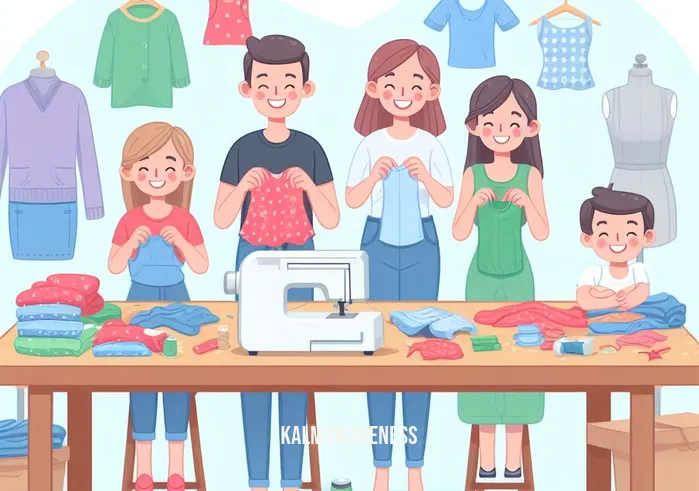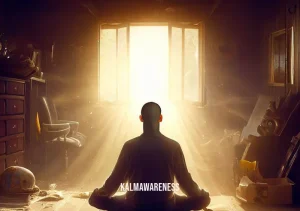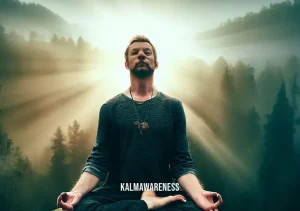Why Is Sewing So Hard? Understanding The Intricacies and Transformative Power of a Timeless Skill
Sewing, an ancient craft and art form, has survived millennia and still thrives in the digital age. However, many who take up the needle and thread often ask, “Why is sewing so hard?” At first glance, it seems like a straightforward task – take fabric, thread, and needle, then stitch. Yet, those who’ve tried their hand at it know the depth of challenge it poses. Drawing from the categories of Sewing, Difficulty, Skill, Patience, Focus, Creativity, and Inspiration, we’ll delve deep into the intricacies of sewing and uncover the reasons behind its perceived difficulty.
The Nature of Skill Acquisition
Learning a new skill, irrespective of its domain, is always a challenge. Whether it’s meditation, a tool that aids in switching on your brain’s 5-step learning process, or getting along with the monsters of distraction that haunt our concentration, the initial phase is fraught with pitfalls. Similarly, sewing demands a dedicated focus. It isn’t just about handling the materials, but also about mastering techniques, understanding fabrics, and ensuring precision.
A Test of Patience and Focus
When things don’t go as planned, it’s easy to end up losing patience. Sewing is a practice that tests both our patience and our focus. It’s not uncommon to hear of sewers spending hours on a single garment, only to find a mistake that mandates starting over. It’s in moments like these where one truly realizes the value of the focused mind that sewing demands.
Furthermore, in today’s fast-paced world, where instant gratification reigns supreme, taking the time to sit, focus, and methodically work on a piece can feel alien. However, it’s worth noting that the act of sewing can be likened to meditative practices. The repetitive motion, the rhythmic sounds, and the single-minded focus mirror the experience of Bruce Lee’s meditation techniques or even the more traditional Dhyani Mudra practices.
Unlocking Creativity and Inspiration
Beyond the technical challenges, sewing also demands a creative spirit. It requires one to touch that body part of the brain responsible for innovation and creativity. Inspiration isn’t always at our beck and call. Sometimes, it takes time, sometimes it demands that we aim for the moment and truly immerse ourselves in the task at hand.
When embarking on a sewing project, a sewer not only recreates a design but also adds personal touches, ensuring each piece is unique. This act of creation requires a balance between technical skill and creativity, between precision and freedom.
Sewing in the Modern Era: An Invitation to Rediscover
In the age of ready-to-wear garments and fast fashion, the art of sewing offers an invitation to slow down, to occupy oneself with a task that demands time, attention, and dedication. It’s a chance to reconnect with a skill that our ancestors deemed essential. More than just creating clothes, it’s about creating experiences, memories, and pieces that tell stories.
When we frame sewing in this light, the question shifts from “why is sewing so hard?” to “how can I embrace this challenge?” It’s about changing our mindset, taking a leaf from practices that teach us to let the game come to you instead of constantly chasing after perfection.
In a world filled with distractions and fleeting pleasures, sewing stands out as a beacon of mindful creation. It’s a skill that, while demanding, offers untold rewards to those willing to persevere.
Embarking on a Journey
This introduction has only touched the surface of the vast world of sewing. As we delve deeper into this topic in the subsequent segments, we’ll explore the historical significance of sewing, the therapeutic benefits it offers, and how the digital age has transformed this ancient craft. If you’ve ever wondered about the interplay between sewing and mindfulness practices like fire meditation or how the bairn bowl technique can enhance your sewing experience, continue reading in the next chapter. The answers might just inspire you to thread that needle and embark on a transformative journey of your own.
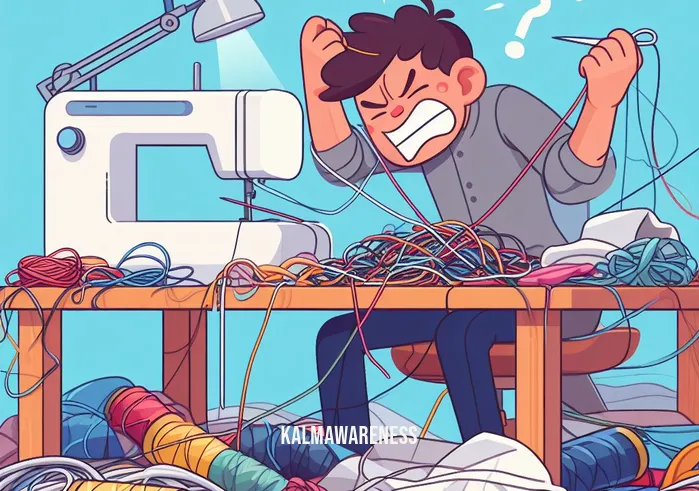
The Anatomy of Challenge: Unraveling the Complexities of Sewing
The age-old craft of sewing, despite its enduring nature, continues to pose questions for newcomers. Central to these inquiries is our main concern: Why is sewing perceived as such a daunting task? To get a clearer perspective, let’s delve into the intricate facets that make sewing a challenging yet rewarding endeavor.
Variety and Unpredictability of Materials
Different materials demand different techniques. Sewing silk is a world apart from stitching denim. Each fabric type has its quirks, and understanding these idiosyncrasies is crucial. Much like how certain meditation practices like the a brief meditation on breath differ in technique and outcome from the flight rising meditate method, each fabric demands a unique approach.
List of Common Fabrics and Their Challenges:
- Cotton: Prone to shrinking, needs pre-washing.
- Silk: Slippery and delicate, requires careful handling.
- Denim: Thick and rugged, demands sturdy needles.
- Wool: Can stretch or shrink, necessitates special care.
- Synthetics: Prone to melting under high heat, needs low-temp ironing.
Intricacies of Patterns and Design
While the fabric forms the base, the pattern is the blueprint. And, much like trying to keep in mind a definition or aiming to occupy oneself with a single thought during meditation, sticking to a pattern requires concentration and precision.
Bullet Points Highlighting Pattern Challenges:
- Deciphering pattern instructions, which might seem like reading a foreign language.
- Adjusting patterns to fit individual body shapes and sizes.
- Ensuring precision in cutting, as a slight mistake can disrupt the entire garment’s fit.
- Transferring pattern markings to fabric without causing permanent marks.
The Role of Tools and Equipment
An artist is only as good as their tools. In sewing, the importance of having the right equipment cannot be overstressed. But, much like trying to switch on your brain’s 5-step learning process, it’s vital to understand each tool’s role and how to use it effectively.
| Tool | Purpose | Common Challenges |
|---|---|---|
| Sewing Machine | Automated stitching | Machine jams, thread tension issues |
| Scissors | Cutting fabric | Keeping sharp, ensuring precision |
| Seam Ripper | Removing stitches | Avoiding fabric damage |
| Measuring Tape | Taking body measurements, ensuring fit | Ensuring accuracy, preventing stretch |
| Needles | Manual stitching, embroidery | Selecting the right size and type |
The Journey to Mastery: Embracing the Learning Curve
The process of sewing is more than just stitching fabric together. It’s an art, a craft, and a journey. The pathway to sewing proficiency is often paved with mistakes, trials, and experiments. And while it might be tempting to think of errors as setbacks, it’s essential to let the game come to you, embracing each challenge as an opportunity to grow.
Looking Ahead: The Future of Sewing
While the essence of sewing remains rooted in its traditional techniques, the future holds much promise. With technological advancements and innovative materials, sewing’s landscape is ever-evolving. However, the challenges remain, and understanding them is the key to navigating the craft’s complexities.
In our next segment, we’ll explore the transformative power of sewing. We’ll look at its therapeutic benefits, the personal growth it can foster, and how the practice of stitching can transcend mere craftsmanship to become a deeply introspective and enlightening journey. So, if you’re curious about how sewing intertwines with mindfulness practices like the hug method of shifting or the wisdom embedded in the practice of meditating man, stay tuned for the next chapter. The tapestry of sewing is vast, and we’ve only just begun to uncover its many layers.
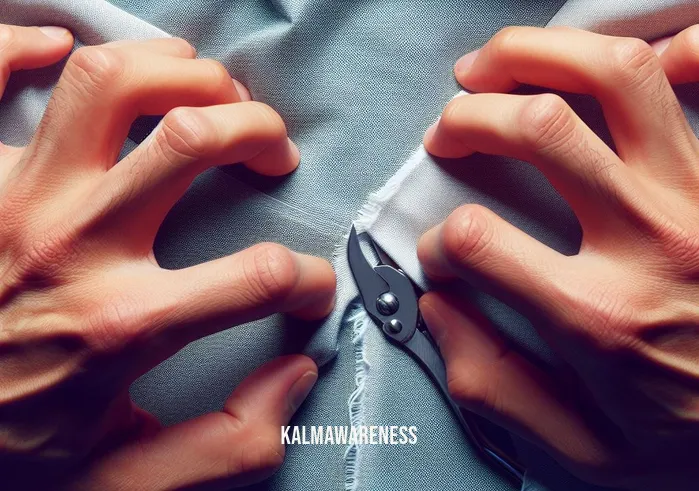
Stitching Stories: Where Challenges Meet Inspiration
Every challenge comes bearing a seed of inspiration, and in the world of sewing, this principle rings especially true. As we’ve established, sewing can be demanding and intricate, but it’s essential to realize that it’s precisely these challenges that kindle creativity and ignite passion. In this chapter, we will explore the transformative power of perseverance, the stories that inspire, and the beacon of hope that keeps sewists pushing boundaries.
From Ripples to Waves: Stories of Resilience
Marie’s Silken Journey: Marie, a self-taught seamstress, once found herself confounded by the slippery nature of silk. However, instead of avoiding the fabric, she dove deep into understanding it, applying techniques similar to the fire meditation, focusing her energy and attention. Today, she runs a boutique specializing solely in silk garments, a testament to her determination.
Jake’s Denim Revolution: Jake never thought sewing was for him, but a torn pair of beloved jeans changed his perspective. His initial attempts were clumsy, reminiscent of how one feels when first trying to touch that body part in a new yoga posture. With persistence, Jake not only repaired his jeans but also started upcycling old denim pieces. Now, he conducts workshops teaching others the beauty of repurposing.
Quotes that Sew Stories of Hope
“In every stitch, there’s a story waiting to be told. Our job is not to perfect the seam but to narrate that tale.” – Unknown
“Sewing is not about the fabric or the thread. It’s about the soul we weave into every piece.” – Catherine Harper
“When your fingers fumble, let your heart take the lead. It knows the patterns your mind has yet to see.” – Eleanor Stitchfield
“Every misstitch is but a stepping stone to mastery. Celebrate them, for they guide your journey.” – Anna Tailor
The Silver Lining: Challenges that Became Turning Points
The journey of sewing, like the practice of bruce lee meditation, is about centering oneself amidst challenges. Every misstep, every broken thread, can lead to revelations. For instance:
Ella’s Pattern Disaster: Ella once mistook a dress pattern, cutting it two sizes too small. Instead of discarding it, she innovatively added lace panels. The result? A unique design that became her best-seller!
Tom’s Quilting Quest: Tom, aiming for a geometric quilt, mistakenly sewed mismatched triangles. This ‘error’ led to a beautiful abstract design, echoing the philosophy of dhyani mudra, where symmetry isn’t the key, but intention is.
Fueling the Future: Drawing Inspiration from Challenges
Understanding that sewing’s complexity is a goldmine for creativity can shift one’s perspective. Much like the best Hz for meditation that resonates differently with each individual, sewing challenges vary. But they all offer an opportunity to innovate, learn, and inspire.
- Case in Point, Lila’s Layered Legacy: Lila always struggled with layering fabrics. Instead of shying away, she embraced her ‘imperfect’ layers, creating a trademark style of asymmetrical layering, showcasing that perceived weaknesses can indeed become our strengths.
Looking Beyond the Seams
As we stitch our way forward, it’s crucial to remember that sewing is more than just creating garments. It’s about crafting stories, building legacies, and cherishing every challenge that paves the way for inspiration. These tales of triumph and tenacity serve as a reminder that every hurdle hides a stepping stone.
In the next chapter, we’ll be weaving threads of mindfulness into our sewing narrative. Prepare to explore how the rhythm of the needle aligns with the cadence of our heartbeats, and how every stitch can become a meditation in itself. If the tales of inspiration intrigued you, the spiritual journey of sewing promises to be an enlightening experience. Stay with us, as we unravel more threads of this intricate tapestry.

Unraveling the Complexity: Understanding Why Sewing Is So Hard
It’s no secret that sewing, with its intricate details and demanding precision, poses challenges even for the seasoned. But why is sewing so difficult? As with many crafts, the answers are multi-faceted. This chapter endeavors to dissect the challenges stitch by stitch, highlighting the nuances that make sewing both a craft and an art.
The Technical Side of Sewing
As with flight rising meditate techniques, where one must focus on specific breathing patterns and postures, sewing demands technical prowess. Let’s explore some core technical challenges:
Fabric Choices: Not all fabrics are created equal. From slippery silks to stretchy knits, the fabric’s nature can drastically change the sewing experience.
Pattern Complexities: Patterns can range from simple straight cuts to intricate shapes requiring adept hand-eye coordination.
Seam Allowances: A mere millimeter can make the difference between a well-fitted garment and a misfit. Being precise with seam allowances is crucial.
Tool Mastery: Just like a samurai with his sword, a seamstress must master her tools. Whether it’s the sewing machine, the serger, or even the humble needle and thread, each has its quirks.
The Cognitive Demands
Sewing isn’t just about hands-on work. It demands a cognitive investment reminiscent of the focus needed in practices like switching on your brain’s 5-step learning process.
Visualization: Before even making the first stitch, one has to visualize the end product, considering aspects like draping, fit, and aesthetics.
Problem Solving: Encountering roadblocks is a given. Whether it’s a mismatched seam or a botched buttonhole, solutions need to be creative and immediate.
Patience and Persistence: Much like the need for endurance in letting the game come to you, sewing demands patience. It’s not just about getting it right, but getting it perfect.
Emotional Investments
Behind every stitch, there’s an emotion. The emotional facets are often the least discussed but are intrinsically tied to why sewing is perceived as challenging.
Perfectionism: Every seamstress aims for the perfect stitch, leading to self-imposed pressures.
Attachment: Crafters often develop an emotional attachment to their projects, making every perceived error a personal setback.
Expectation vs. Reality: Just like the dichotomy in keeping one thing in mind but confronting a different reality, sewists often grapple with the gap between their vision and the actual output.
The External Environment
Beyond the personal and technical, external factors play a significant role in the sewing experience.
Resources: Access to high-quality materials, tools, and patterns can significantly influence the outcome.
Learning Curve: Unlike occupying oneself with simpler tasks, sewing has a steep learning curve. The availability of guidance, be it through mentors or classes, can dictate the journey’s ease.
Space: A conducive environment, with ample space and lighting, can be the difference between a delightful sewing session and a challenging one.
A Thread Forward
Having delved deep into the labyrinth of challenges, it becomes evident that sewing is a confluence of technical, cognitive, emotional, and external factors. Each aspect interweaves to create the complex tapestry of the sewing experience.
As we prepare to conclude our exploration in the final chapter, we’ll stitch together insights, celebrating sewing not just as a task laden with challenges but as an inspiring journey of creativity, determination, and passion. The narrative will come full circle, promising a holistic understanding of the world of sewing. So, as we tie the loose ends, stay with us for the final revelations.
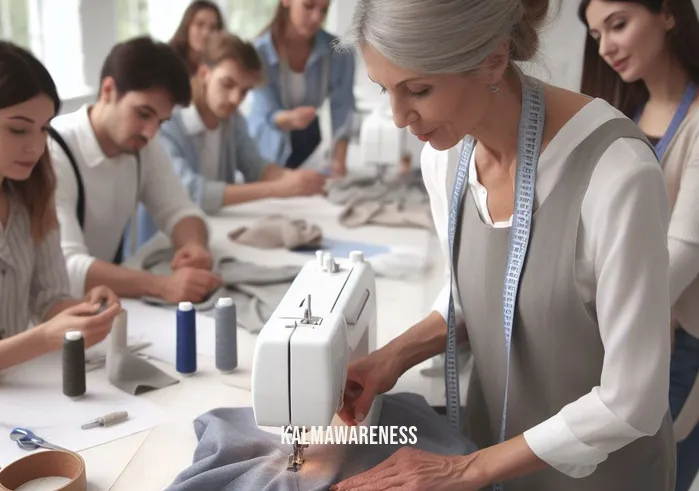
The Fabric of Mastery: Piecing Together the Puzzle of Sewing’s Complexity
As we pull the thread through the eye of our exploration, the intricate pattern of ‘why is sewing so hard’ finally comes into sharp focus. This journey, reminiscent of the meditative practices explored in a brief meditation on breath, has unraveled layers of complexity and beauty, leading us to profound appreciation.
From Threads to Tapestries
Our expedition began by identifying sewing as more than just joining fabrics. It’s a blend of technical challenges, cognitive demands, emotional investments, and external environmental factors. Just as Bruce Lee’s profound insights on meditation shape our understanding of mindfulness, our exploration has reshaped our perception of sewing.
A Stitch in Time: Lessons Learned
Every Challenge is an Opportunity: Like the shifts brought by the Hug Method, each sewing challenge can lead to growth if approached with the right mindset.
Mastery Requires Patience: The journey to sewing mastery is long and requires the patience highlighted in our discussions on losing patience.
Sewing is a Mirror: Just as the Dhyani Mudra helps reflect our inner peace, sewing mirrors our perseverance, creativity, and dedication.
Beyond the Seams: The Way Forward
Now that we have a deeper grasp on the challenges of sewing, it’s crucial to harness this knowledge. Whether you’re a seasoned tailor or an amateur, remember to:
- Seek Guidance: Dive into resources, from the Bairn Bowl’s enriching content to sewing workshops.
- Practice with Purpose: Just as the meditating man finds solace in repetition, embrace practice as your ally in sewing.
- Celebrate Small Wins: As you progress, remember to acknowledge even the tiniest achievements. Every stitch counts!
The Final Fold
Dear reader, our exploration has been as intricate and captivating as the sewing process itself. We’ve stitched together insights, anecdotes, and invaluable lessons. Just as one redirects conversations using strategic phrases, we urge you to redirect your sewing apprehensions into avenues of growth.
While this journey concludes here, the world of sewing, with its endless possibilities, awaits your exploration. If this series has piqued your curiosity, we encourage you to delve deeper, revisit earlier chapters, or even embark on sewing projects to experience the craft’s joys and challenges firsthand.
To all the seamstresses, tailors, and sewing enthusiasts, we salute your dedication and passion. Stay tuned for more insightful content in our upcoming editions. Your engagement and feedback have been invaluable, and for that, we are immensely grateful. Sew on, with passion and precision, and remember, every challenge is but a stitch in the vast tapestry of your sewing journey!
